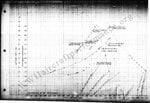GrauGeist
Generalfeldmarschall zur Luftschiff Abteilung
Curtiss had other aircraft being produced (C-46, SB2C, CW-22, AT-9, O-52, SC and the ill-fated SO3C) so their manufacturing capacity was stretched thin (which is why North American was aproached by the BPC to build them Hawk 81s).Bell had industry experience, but they didn't have an experienced factory staff. And understanding a business is not the same as running one; there is a learning curve there in everything from hiring to marketing to quality control to anticipating industry direction.
Bell didn't have to learn everything from scratch, but he had to build the company from scratch, except for the building. Consolidated left that and Bell grabbed it.
An illustration: Curtiss delivered 1,200+ P-36/P-40s in 1940. Bell delivered 926 P-39s in 1941 (plus 13 prototypes in 1940).
As both companies ramped up production, Curtiss went to 2,200+ in '41, 4,400+ in '42, and 4,200+ in '43. Bell increased more slowly at first, 926 in '41, 1,973 in '42, then passed Curtiss with 4,900+ in '43. In addition, Bell was able to develop a significantly better fighter using the same basic configuration, the P-63, while Curtiss never did find an acceptable P-40 follow-on. Lessons well learned and applied.
All told, Curtiss produced close to 14,000 P-40 types which is a bit more than Bell's P-39 numbers, which was less than 10,000.
Which is impressive, considering that the Hawk 81 was a follow-on to the Hawk 75. The fact that Curtiss couldn't develop the P-40 any further (not for the lack of trying, however) is not surprising, since the airframe was a mid-30's design.



